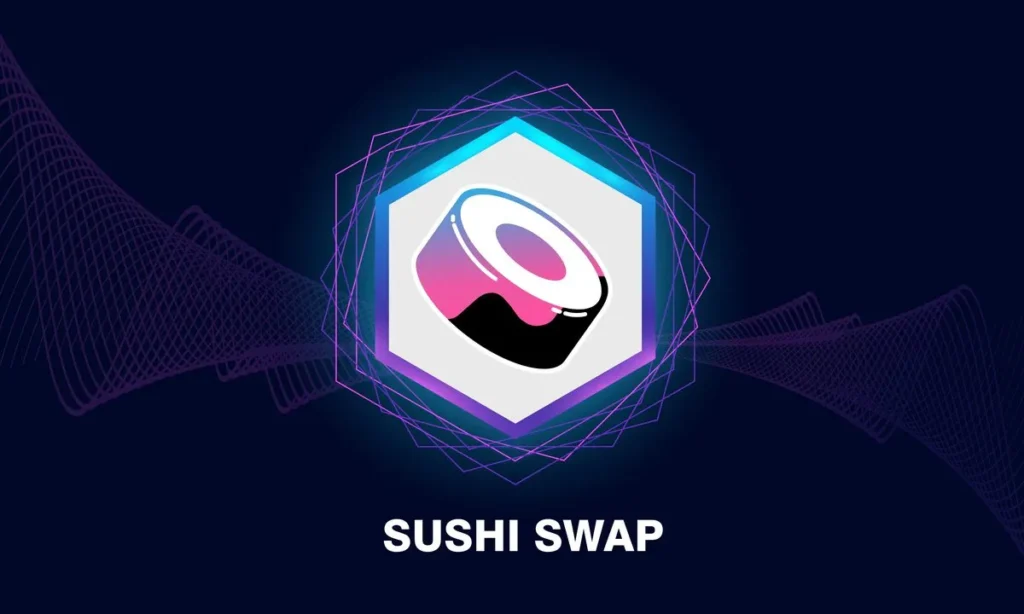Liquidity pools refer to a group of tokens or digital assets locked in a smart contract and provide crucial liquidity to decentralized exchanges. This article discusses the dynamics of liquidity pools and yield farming rewards.

Liquidity is an essential component of both the cryptocurrency and financial markets. It converts assets to cash quickly and effectively while avoiding large price movements.
An illiquid asset requires a lengthy time to convert to cash. You may also have slippage, the gap between the price you wanted to sell an asset for and the amount it sold for.
Liquidity pools are essential in developing a liquid decentralized finance (DeFi) system.
Consider waiting to order at a fast-food establishment. Liquidity is equivalent to having a large number of cashiers. This would expedite orders and transactions, making customers pleased.
Conversely, illiquidity is analogous to having only one cashier serving a vast queue of clients. This would result in slower orders and transactions, making customers unhappy.
In traditional finance, liquidity is provided by buyers and sellers of assets. DeFi, on the other hand, operates primarily through liquidity pools.
A decentralized exchange (DEX) without liquidity is like a plant without water. It will not survive. DEXs rely on liquidity pools to keep going.
Understanding Liquidity Pools
A liquidity pool is a digital cryptocurrency collection protected by a smart contract. This results in more liquidity and faster transactions.
Automated market makers (AMMs) play an essential role in liquidity pools. An AMM system employs liquidity pools to enable automated trading of digital assets rather than a traditional buyer-and-seller market.
In other words, AMM platform users give tokens to liquidity pools, and an AMM-specific mathematical algorithm decides the price of the tokens in the pool.
Liquidity pools are also necessary for yield farming and blockchain-powered online games.
Liquidity pools are intended to reward users of various cryptocurrency platforms, known as liquidity providers (LPs).
After a set period, LPs are paid with a proportion of fees and incentives equal to the amount of liquidity they provide, known as liquidity provider tokens (LPTs). The LP tokens can be utilized in many ways on a DeFi network.
SushiSwap (SUSHI) and Uniswap are popular DeFi exchanges that leverage Ethereum liquidity pools, including ERC-20 tokens. At the same time, PancakeSwap makes use of BEP-20 tokens on the BNB Chain.
During a trade, traders or investors may experience a price gap between the predicted and executed prices. This is frequent in both the regular and cryptocurrency markets.
The liquidity pool tries to address the challenges associated with illiquid markets by offering incentives to its members and providing liquidity in exchange for a portion of trading expenses.
Trades with liquidity pool programs, such as Uniswap, do not require matching the expected price to the executed price.
AMMs, built to enable trades efficiently by bridging the gap between buyers and sellers of crypto tokens, make DEX market transactions simple and reliable.
A liquidity provider can earn rewards for supplying liquidity using LP tokens in various methods, including yield farming.
This enables a liquidity provider to earn significant returns for a slightly higher risk by allocating funds to trading pairs and rewarding pools with the highest trading fees and LP token rewards on other platforms.
Many DeFi platforms provide additional incentives to liquidity providers. Investors with a high-risk tolerance can use liquidity pools to participate in the following:
- Yield farming
- Staking
- Liquidity mining
- Platform governance
- Liquid staking
Popular Liquidity Pools
Nowadays, many decentralized platforms use liquid asset pools to trade digital assets in an automated and permissionless manner.
Liquidity pools are essential in DeFi because they offer the liquidity required for the ecosystem to function efficiently while reducing dependency on traditional financial intermediaries.
Popular platforms that base their business on liquidity pools are:
- Uniswap
- Curve
- Balancer
- SushiSwap
Uniswap

Uniswap is a decentralized exchange that operates on the Ethereum blockchain and allows you to trade any ERC-20 token since new tokens are added daily.
Uniswap maintains many liquidity pools. Some of their most popular pools offer ETH/USDT, ETH/DAI, and ETH/USDC trades.
Curve

This decentralized exchange specializes in stablecoins and offers low-slippage trading for related assets.
Curve contains numerous liquidity pools. Some of their most popular pools accept BTC/renBTC, wBTC/sBTC, and USDT/USDC/DAI.
Balancer

This decentralized exchange platform lets users construct unique liquidity pools of up to eight tokens. Popular balancer pools are ETH/USDC/DAI/WBTC, WBTC/renBTC/sBTC, and LINK/ETH.
SushiSwap

SushiSwap is a decentralized exchange that provides liquidity pools and high-yield agricultural incentives to liquidity suppliers. The most popular SushiSwap pools are ETH/USDC, ETH/USDT, and ETH/WBTC.
Pros of Liquidity Pools
Some advantages of using liquidity pools include;
- DEX trading is simplified by allowing transactions to be executed at real-time market pricing.
- Allows users to offer liquidity while receiving rewards, interest, or an annual percentage yield on their cryptocurrency.
- To provide transparency of security audit information, publicly viewable smart contracts are used.
Cons of Liquidity Pools
Here are some known cons of liquidity pools;
- The pool of funds is controlled by a tiny group, which contradicts the principle of decentralization.
- Risk of hacker vulnerabilities due to inadequate security mechanisms, resulting in losses for liquidity providers.
- There is a risk of fraud, such as rug pulls and exit scams.
- Exposure to temporary loss. This occurs when the price of your assets locked up in a liquidity pool fluctuates, resulting in an unrealized loss compared to holding the assets in your wallet.
Now that we have discussed liquidity pools let us delve into yield farming, analyze it, and see its rewards.
Understanding Yield Farming
Yield Farming, or YF, is the most popular technique for benefiting from cryptocurrency holdings. Investors can get passive income by holding their cryptocurrency in a liquidity pool.
These liquidity pools are similar to centralized finance or the CeFi counterpart of your bank account. You deposit funds, which the bank uses to make loans to others, paying you a specified part of the interest earned.
Yield farming collects interest on cryptocurrency assets by lending or staking them in decentralized finance (DeFi) protocols.
These protocols provide a variety of incentives, such as governance tokens, to encourage users to secure their assets and contribute liquidity to the platform.
Yield farming is more recent than staking, yet it shares many similarities.
While yield farming provides liquidity to a DeFi protocol in exchange for yield, staking can be defined as locking up 32 ETH to become a validator node on the Ethereum 2.0 network.
Farmers aggressively seek the highest yield on their investments, rotating between pools to maximize their profits.
Yield farmers, or investors, deposit crypto assets in a smart contract-based liquidity pool such as ETH/USD. This technique is known as Yield Farming.
The locked assets are subsequently made available to other protocol participants. The lending platform allows users to borrow these tokens for margin trading.
Yield farmers form the foundation for DeFi protocols that offer trade and loan services. They also help to keep cryptocurrency assets liquid on decentralized exchanges (DEX). Yield farmers receive payment as an annual percentage yield (APY).
Rewards of Yield Farming
Yield farming, known as liquidity mining, has become one of the most popular movements in the cryptocurrency market.
It generates passive revenue by supplying liquidity to decentralized finance (DeFi) protocols. Yield farming has existed for a few years but gained traction in 2020 when DeFi became popular.
Here are some of the rewards of yield farming;
- High returns
- Diversification
- Access to new tokens
- Promoting decentralization
- Community participation
High returns
One of the most significant advantages of yield farming is the possibility of high profits. Some DeFi protocols can provide annual percentage yields (APYs) as high as 400%.
Of course, not all protocols provide such large returns and are subject to change based on market conditions. However, the prospect of big earnings is appealing to yield growers.
Diversification
Another advantage of yield farming is the ability to diversify your bitcoin holdings. By supplying liquidity to many DeFi protocols, yield farmers can spread their risk and avoid concentrating all their assets in one location.
Yield farming also allows users to receive incentives in various cryptocurrencies, further diversifying their portfolio.
It is important to note that diversification does not guarantee profits or safeguard against losses, but it can help decrease risks.
Access to New Tokens
Yield farming also grants access to novel currencies not seen on standard cryptocurrency exchanges. Yield farmers that provide liquidity to a new DeFi network can earn incentives in the system’s native coin.
The token’s value may rise if the protocol is effective, creating extra upside potential. However, it is critical to undertake thorough research before investing in any new token or DeFi technology.
Promoting Decentralization
One of the fundamental principles of cryptocurrency is decentralization. Yield farming encourages decentralization by allowing anyone with an internet connection to offer liquidity for DeFi protocols.
This democratizes finance and minimizes the need for centralized intermediaries like banks.
Community Participation
Yield farming also encourages community involvement. Many DeFi protocols have active communities of developers and users dedicated to the protocol’s aim.
By providing liquidity to these protocols, yield farmers become community members, allowing them to participate in governance and decision-making.
This can foster a sense of ownership and belonging while promoting financial decentralization.
Conclusion
To improve the trading experience, many protocols incentivize users to generate liquidity by allocating extra tokens to specific “incentivized” pools.
Liquidity mining is participating in incentivized liquidity pools as a provider to obtain the most LP tokens. Liquidity mining is how crypto exchange liquidity providers optimize LP token revenues on a particular market or platform.
There are numerous DeFi markets, platforms, and incentive pools where you can earn rewards for providing and mining liquidity using LP tokens.
So, how does a cryptocurrency liquidity provider decide where to invest their funds? Here’s where yield farming comes into play. Yield farming is staking or locking up currency within blockchain technology to create tokenized rewards.
Yield farming is staking or locking up tokens in various DeFi applications to generate tokenized rewards that help maximize earnings.
This enables a crypto exchange liquidity provider to earn significant returns for a slightly higher risk by allocating funds to trading pairs and incentive pools with the highest trading fees and LP token rewards on several platforms.

